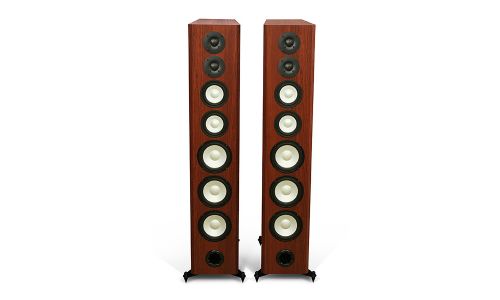What brand of AV receiver should I consider to drive the 4-ohm M100 loudspeakers?
For rooms up to 4,000 cu. ft in volume (length x width x height), Axiom has found that receivers from:
Denon,
NAD,
Outlaw Audio,
Sherwood Newcastle,
Harman/Kardon,
Rotel,
B&K,
Pioneer Elite,
high-end Onkyo ($800 and up)
and high-end Yamaha ($1000-plus)
are the most stable and will make these speakers sing. Buyers who have "great rooms" or those with cathedral ceilings or who want movie-theater-loud playback levels in such rooms should consider using separate outboard power amplifiers for at least the M80s.
What distance from the back wall?
A minimum clearance of 2 inches from the back wall is sufficient. If deep bass output is exaggerated, move the speaker farther out from the wall behind.
What distance from the side walls?
Avoid corners where possible and keep the speakers at least 1 foot or so away from the side walls.
Why 4-ohm Impedance?
The impedance is not chosen by the speaker designer. The impedance is determined by the number of drivers in the speaker (an M100 has seven) and the complexity of the crossover network. To try and make the M100 an 8-ohm speaker would degrade its sound quality and result in power losses.
Benefits associated with 4-ohm Impedance?
Impedance is an electrical trait. If the receiver or amplifier is stable into 4-ohm loads, it will be able to "pull" more power, up to twice as much, from the amplifier than an 8-ohm speaker.
Why dual tweeters?
Dual tweeters (and dual midranges and woofers) are used in the M100's to greatly increase maximum power handling (volume) and lower distortion at very loud playback levels.




